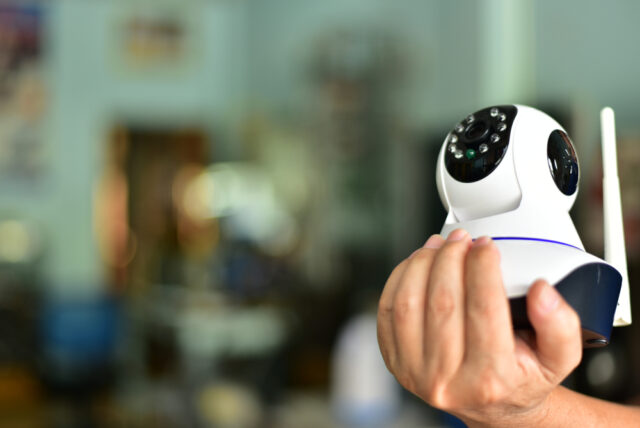
Internal cubic IP video camera: 9 pros + 5 cons
Without high-quality equipment, any video surveillance will not give the required results, even indoors. Pay attention to cubic network IP cameras, which are perfect for both home control and business tasks. In this article, we will look at all the advantages and disadvantages of this model. We will also offer a simpler and more budgetary option.
What is an indoor cube video camera?
The internal cube chamber is so-called because of its shape and purpose (it can only be installed indoors). The device is mounted vertically on a platform or bracket.
Inside the case, you will find:
- IR illumination;
- a lens with automatic adjustment of image sharpness;
- a module that transfers the received data to a memory card, hard drive, or to the cloud;
- built-in speaker and microphone.
There are wired and wireless models.
Application of the equipment
As mentioned above, a cubic video camera can be installed only in heated rooms. If there is no temperature maintenance system in the room, condensation will appear inside the case, which will damage the electronics.
It is best to install miniature devices in:
- small technical rooms;
- shops;
- offices;
- warehouses;
- etc.
Devices can be combined into one network and thereby increase the monitoring area.
9 benefits
This is why network cameras are popular in the market:
- the high resolution of the resulting picture;
- the ability to change the scale;
- some wireless models simplify installation and reduce the cost of the system;
- the ability to remotely monitor and control equipment;
- easy installation;
- there are motion sensors;
- it is possible to combine several devices into a single network;
- there is no double signal conversion option, which reduces the shooting detail;
- there is a backlight compensation function;
- the ability to archive information.
5 disadvantages
But cube cameras still have drawbacks. And here are the main ones:
- there is no protection against electromagnetic interference; the device will not work well at production facilities;
- unique software, due to which different components of the system can conflict with each other, disrupting work;
- without a data transmission amplifier, the camera will work at a distance of no more than 100 meters. To learn how to amplify this signal, read here;
- due to network congestion, data may be transmitted with a slight delay;
- a separate communication system will be required, otherwise, the throughput will decrease.
As easy as pie
If you do not want to overpay for additional system components or a cube camera does not suit you due to its shortcomings, there is an easier option – intelligent cloud video surveillance from Faceter with analytics and remote control. To use the service, you will need:
- wireless IP camera;
- regular phone.
A smartphone as a surveillance camera is suitable for household tasks (baby monitor, control of service personnel, monitoring a car in the yard, or monitoring the general situation in the house).
Equipment requirements:
- for home surveillance cameras shall be at least 1.3 MP;
- for remote control they need to be at least 5 MP;
- iOS OS from 10 and above or Android from 5.0;
- basic performance without interruptions and freezes.
You can download the mobile application so that video surveillance is always with you by following the links:
To conclude
Internal cube camera is to cope with its tasks in a warm heated room. It is best suited for installation in technical rooms, shops, offices, and homes.
But Faceter opens up innovative monitoring capabilities at affordable prices and anywhere.














